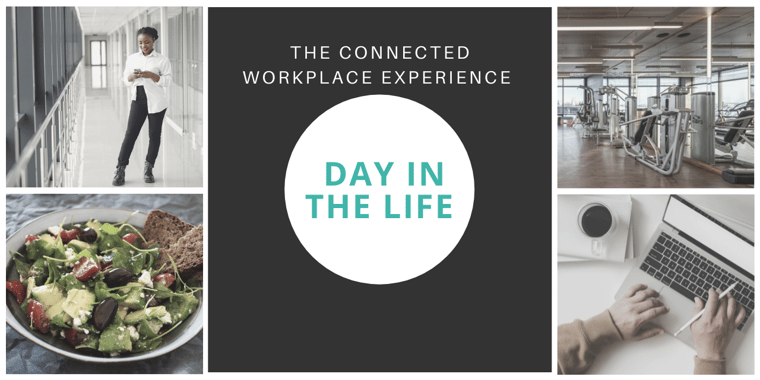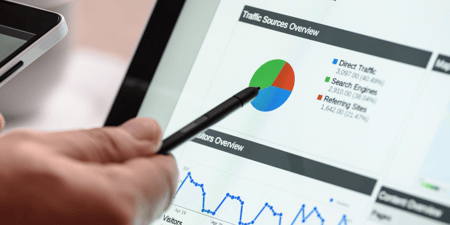Let's whet our appetite a little...
Sticky toffee French toast layered in balsamic strawberries. Double bison burger with gooey smoked gouda cheese covered in onion jam. Spicy-sweet curry seafood gumbo with saffron rice. Prosciutto, fig, and gorgonzola hand-tossed pizza.
If your mouth isn't watering yet, why?
It's all food. Delicious food. Let's talk about it.
These are real examples of dishes that could be ordered at large campuses, through corporate dining services... pre-pandemic. Foodservice was wonderful, and there were many unique, yet welcome offerings. It was all wrapped up in company culture, local, and global cuisine. Of course, this kind of service was in addition to dry cleaning, daycare, gym access, events, and beyond.
Prior to 2020, corporate dining, and in many cases, free meals, were a shining employee perk. Many employees were happy to eat on campus at on-site locations, and the food was phenomenal. It was also a major selling point for attracting top talent. Apple, Facebook, Google, and many others towed the line in corporate cafes with innovative food services, kiosks etc.
Some of the options you'd regularly see include:
- Food stalls that embraced culinary and dining trends like Keto, plant-based meals, macro bowls, and so on.
- Pop-up restaurants with ready-made wait staff.
- Smoothie stations with drinks, desserts, and trendy ingredients.
- Global cuisines and experiences including many unique foods, meals, snacks, and samples.
- Unique food trucks with direct location access and capacity to be mobile.
Then the pandemic hit and things went to, well, not what they used to be. How can we get all of that back while facing the new normal?
Managing Corporate Dining Services In the Post Pandemic Workplace
An emerging, but obvious, trend for offices that either have or are planning to reopen is adapting their dine-in options. Employee perks may be back, especially for on-site workers, but they've been changed considerably.
With new hybrid and remote workforce considerations, they've changed to offer more versatile options like brown bag lunches, drive-by pickups, made-to-order meals, and more. During the past year, corporate lunch and dining services have evolved considerably, whether for the better or not — it depends.
- It was a great alternative to on-site perks for people stopping by the cafe to pick up a quick lunch or snack.
- It's primarily designed for a hybrid workforce, with many people leaving campus or just visiting.
- Unique meals or food options tend to fall by the wayside with this new platform, as the goal is to provide for an ever-dynamic audience.
The pressing question is, where do we go from here? As workers return to the office, some remain at home, others visit the campus temporarily, how do we continue these same trends, serving the same diverse crowd? Most importantly, how do we offer wholesome experiences for all?
Dining Perks Delivered Through An Employee App
When it comes to dining on-site, it's still a perk that's being offered by many organizations, but it's more costly to maintain when campuses operate at lower capacities, much less than 100%. It also poses other concerns, such as:
- Extended wait times
- Mass lines and more crowded areas
- Potential food exposure to airborne illnesses and contamination
- Unsatisfied workers and visitors
Mobile food ordering is a rising trend that's allowing employees the option to pick up food, have it delivered, or even order for a group of people, including team members. All of this can be done through an employee or workplace app, simplifying the entire system.
There are many benefits to smart food ordering through mobile apps:
Pre-ordering — You can order your food through the mobile app without ever stepping foot in the cafe or eatery. That also means you can browse the menu remotely, place an order, and modify those orders.
Scheduling — You can schedule a pickup time for your food, allowing you to both identify and avoid peak periods in cafeterias and dining halls.
Visibility — Everyone gets a clear picture of what's available and what isn't. This is extremely important considering supply shortages, particularly when it comes to ingredients.
Instant and Contactless Payments — You can pay for your food in advance, leave tips, and more, through a contactless system. Touchless interactions are the future, even long after the pandemic has simmered down.
Safety — A mobile app system better accommodates safe and healthy social distancing, including the option to reserve seating, tables, and countertops with physical distancing. You can also have food delivered to your current location with smart connected services like live maps.
Health and Wellness — Providing employees with an opportunity to get food, especially when it's available on-demand through a mobile ordering system, promotes greater health and wellness. No one has to skip a meal because they don't have time to order or grab it. Everyone has an opportunity to eat and fuel up.
Of course, all of this works in tandem with brown bag pick-ups for off-site visitors and on-the-go workers. Everyone benefits, not just the people spending their day(s) on-site.

A Day in the Life of An Employee
Let's look at this another way - think about the on-site experience and how it could impact you when everything is connected together - including food ordering.
After your commute to the office, you pull into the parking lot, find an open space through the employee mobile app and park. You check-in at the on-site gym, while walking to the location. When you arrive, the app registers that you're ready to workout and unlocks the door. At some point, you take a quick break to pre-order your breakfast through the app. You finish your workout, take a quick shower, get dressed, and then head towards the cafe, where your food is all ready. You grab it and then head towards your desk — which you reserved before heading to work for the day. Upon arriving at your cubicle, you put down your gear, are automatically checked-in to your reserved desk, take a seat and dig into your breakfast - an egg white frittata with roasted vegetables and avocado pesto. Your workday has begun.
With a fully integrated smart campus app all of this is possible, and more. You can even offer employees contextual notifications and alerts, providing food and beverage offers, promoting nearby events or deals, and matching content to user behavior and preferences. IoT and location-based devices, like beacons, make all of this possible and automated. Employees walking by a cafe or food stall can receive instant alerts about the day's specials, for instance. Why yes, I would today's special - a hazelnut pumpkin latte!
Taking all of it just one step further, integrations with smart building technologies, and kiosks, presents even more opportunities. For example, employees can order snacks from the vending machine before getting up from their desks. It's all about convenience.
Enhancing the Remote Work Experience
Obviously, these technologies and applications are excellent for on-site employees, but what does it offer for remote workers? How do we continue to support our off-site employees?
Luckily, a workplace experience platform can support that too. A built-in catering system and food delivery service allows remote employees to participate.
- Remote workers can pre-order and pick up brown box lunches if they're local.
- Integrations with external food delivery platforms can pick up food and deliver them to employees working from home or nearby.
- Certain items may be shippable with online ordering and fulfillment.
This trend and similar ones are part of a safe and effective strategy for the return to work.
We'll see increased automation in the workplace as companies roll-out their reentry plans, including mobile food ordering, touchless desk and conference room reservations, remote access to doors, switch, and more. All of it with one goal in mind - making it easy for employees to access workplace tools and easy for workplace operations to manage.
Welcome to New-Age Corporate Food Services
Believe it or not, corporate food services have a lot to do with employee engagement, satisfaction, and even attendance. More unique and convenient offerings keep everyone intrigued and participating, while many of the available systems help food teams meet safety guidelines.
In this way, companies can embrace technologies that serve diverse needs across the workforce, improve processes, and offer additional rewards or benefits — such as a greater focus on sustainable or biodegradable packaging and containers.
Workplace experience is top of mind, and the more experiences you can connect together through on application, the better engagement and success you'll have.

.png)

.png)







